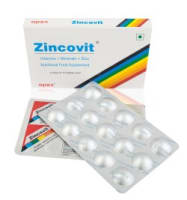USED FOR:
Bacterial infections
Severe allergic reaction
COMPOSITION:
Chloramphenicol (NA)
Prednisolone (NA)
Therapeutic Uses:
otologicals
ophthal otologicals

No interaction found

WEIGH RISKS VS BENEFITS
Orecure Ear Drop may be unsafe to use during pregnancy.Animal studies have shown adverse effects on the foetus, however, there are limited human studies. The benefits from use in pregnant women may be acceptable despite the risk. Please consult your doctor.

CAUTION
Orecure Ear Drop is probably unsafe to use during lactation. Limited human data suggest that the drug could represent a significant risk to the baby.

Orecure Ear Drop may cause blurring of your vision for a short time just after its use. Do not drive until your vision is clear.

Orecure Ear Drop is probably safe to use in patients with kidney disease. Limited data available suggests that dose adjustment of Orecure Ear Drop may not be needed in these patients. Please consult your doctor.

CAUTION
Orecure Ear Drop should be used with caution in patients with liver disease. Dose adjustment of Orecure Ear Drop may be needed. Please consult your doctor.
Uses of Chloramphenicol
Chloramphenicol is used in the treatment of bacterial infectionsIt is used to treat certain types of serious infections caused by bacteria when other antibiotics cannot be used.
How to use Chloramphenicol
This medicine is for external use only.Take it in the dose and duration as advised by your doctor. Check the label for directions before use. Hold the dropper close to the eye/ear without touching it. Gently squeeze the dropper and place the medicine inside the lower eyelid or ear. Wipe off extra liquid.
How Orecure Ear Drop works
Chloramphenicol is an antibiotic. It stops bacterial growth by inhibiting synthesis of essential proteins, required by bacteria to carry out vital functions.
Common Nausea, Vomiting, Diarrhoea, Altered taste.
Expert advice for Chloramphenicol
Always take the complete course of treatment, as advised by your doctor even if you feel better. Antibiotics will not work for colds, flu, or other viral infections. Never take an antibiotic for a viral infection like a cold or the flu.
Q. Is chloramphenicol bacteriostatic or bactericidal/ an antibiotic/does it contains penicillin/ does it contain steroids/ treat styes?
Chloramphenicol is an antibiotic and exerts both bactericidal and bacteriostatic against wide variety of gram positive and gram negative bacteria including E.coli. No, it does not contain penicillin or steroids
Q. Is chloramphenicol safe/ do chloramphenicol cause aplastic anemia/ safe for babies?
Chloramphenicol is safe at recommended dose and duration; however, in some cases it has led to rare side effects such as aplastic anemia. Chloramphenicol should not be used in children under 2 years of age and used be with extreme caution in children above 2 years of age especially who have diarrhea or a stomach or bowel infection
Q. Does chloramphenicol sting/ does chloramphenicol cause dry eyes?
Chloramphenicol eye drops/ ointment may cause transient burning or stinging sensation. It does not cause but should be used with extreme precaution in patients with dry eye syndrome
Q. Can i take paracetamol with chloramphenicol?
Chloramphenicol is not known to have any drug interactions with paracetamol, however, it should be taken together as per doctor's advice
Q. Is chloromycetin a penicillin/ an antibiotic/ with the formula/ chloromycetin is a drug for which disease?
Chloramphenicol is a brand name for chloramphenicol. It is not penicillin. It is an antibiotic with the formula C11H12Cl2N2O5. It used in the treatment of serious infections in different parts of the body caused by bacteria by killing or preventing their growth
Q. Is chloromycetin over the counter/ is obtained from?
No, it is available only with your doctor's prescription
Q. Is chloramphenicol and tetracycline similar?
Chloramphenicol and tetracycline belongs to same category of drugs with similar action, but their effect may vary upon individual response
Q. Is Chloromycetin the same as chlorsig?
Both Chloromycetin and chlorsig contains chloramphenicol. Chlorsig is available as eye drop or ointment and Chloromycetin is an oral formulation.
Uses of Prednisolone
Prednisolone is used in the treatment of severe allergic reaction, allergic disorders, asthma, rheumatic disorder, skin disorders, eye disorders and nephrotic syndrome.
How to use Prednisolone
This medicine is for external use only.Take it in the dose and duration as advised by your doctor. Check the label for directions before use. Hold the dropper close to the eye/ear without touching it. Gently squeeze the dropper and place the medicine inside the lower eyelid or ear. Wipe off extra liquid.
How Orecure Ear Drop works
Prednisolone belongs to a group of medicines called as glucocorticosteroids. Prednisolone increases the level of corticosteroids which are already present in the body and helps to treat various inflammatory conditions. It has anti-inflammatory, metabolic, immune, and hormonal effects on the body..
Common Electrolyte imbalance, Redistribution/accumulation of body fat, Bone degradation, Increased risk of infection, Muscle disorders, Increased blood pressure, Altered bone growth, Skin scar, Behavioural changes, Increased glucose level in blood, Cataract.
Expert advice for Prednisolone
It is a steroid medicine which works well for many different conditions, including serious illnesses. Take regularly to gain maximum benefit. Do not discontinue unless advised by your doctor. You may need to decrease the dose gradually. You may get side effects such as mood changes or stomach problems. Notify your doctor if you get them. Some side effects may occur after weeks or months. These include weakness of arms and legs, or developing a rounder face. Your risk of getting an infection may become higher. Tell your doctor immediately if you have a fever, flu-like symptoms, cough, painful urination, or a wound that does not heal.
Q. Is Prednisolone an anti-inflammatory drug?
Prednisolone belongs to the class of corticosteroids which has anti-inflammatory properties (suppresses the inflammation associated with many diseases, for example, arthritis). Hence, Prednisolone is used for the treatment of a number of inflammatory and auto-immune conditions.
Q. How long can I take Prednisolone for?
It is advisable to take Prednisolone for the duration prescribed by your doctor. Do not stop the treatment suddenly or take for a longer period than recommended by your doctor.
Q. Does Prednisolone contain penicillin?
Prednisolone does not contain penicillin. Prednisolone belongs to a group of medicines called steroids.
Q. Does Prednisolone expire?
Yes, Prednisolone does expire. All the medicines come with an expiry date mentioned on the pack. You must check the expiry date before using any medicine.
Q. Is Prednisolone a pain-killer?
Prednisolone is not a pain-killer. Prednisolone belongs to a group of medicines called steroids which are anti-inflammatory in nature and can help in the relief of pain associated with inflammation.
Q. Is Prednisolone safe?
Yes. Prednisolone is safe if used at prescribed doses for the prescribed duration as advised by the doctor.
Q. Is Prednisolone an immunosuppressant?
Prednisolone belongs to the class of corticosteroids and has immunosuppressant properties (suppresses the body’s immune system). Hence, Prednisolone is used for the treatment of a number of inflammatory and auto-immune conditions.
Q. Is Prednisolone a glucocorticoid?
Prednisolone is a glucocorticoid and belongs to a group of medicines called steroids (corticosteroids).
Q. Can I take Prednisolone with antibiotics?
Certain antibiotics may increase the metabolism of Prednisolone and hence decrease its effects. So, it may be necessary to adjust the dose of Prednisolone accordingly. Please consult your doctor before taking Prednisolone with antibiotics.
Q. Can I take Prednisolone with paracetamol?
Prednisolone can be taken with paracetamol. No drug-drug interactions have been clinically seen between the two. However, interactions may occur. Please consult your doctor before taking the two medicines together.


 Orecure Ear Drop
Orecure Ear Drop  Bookmark
Bookmark





















